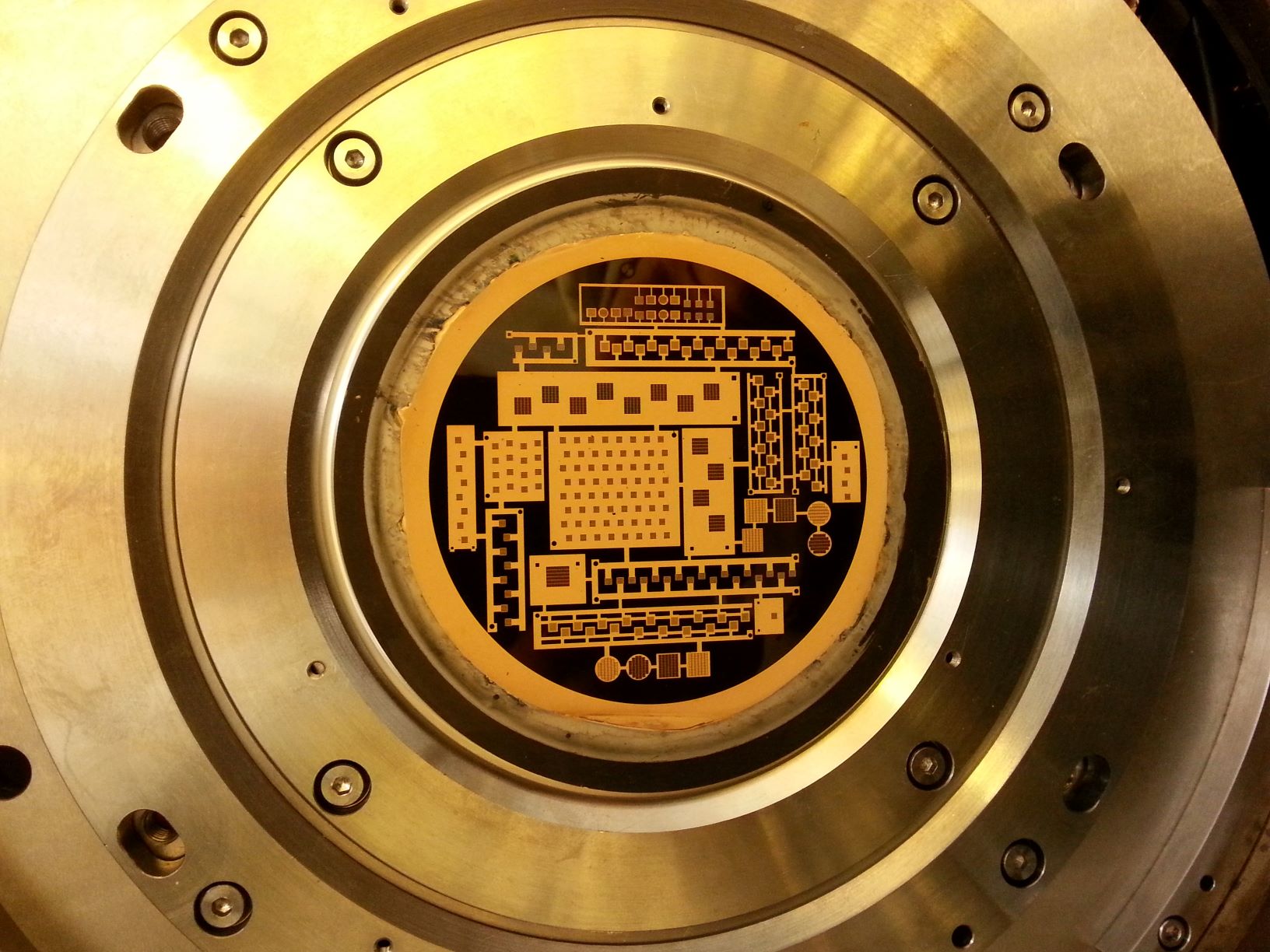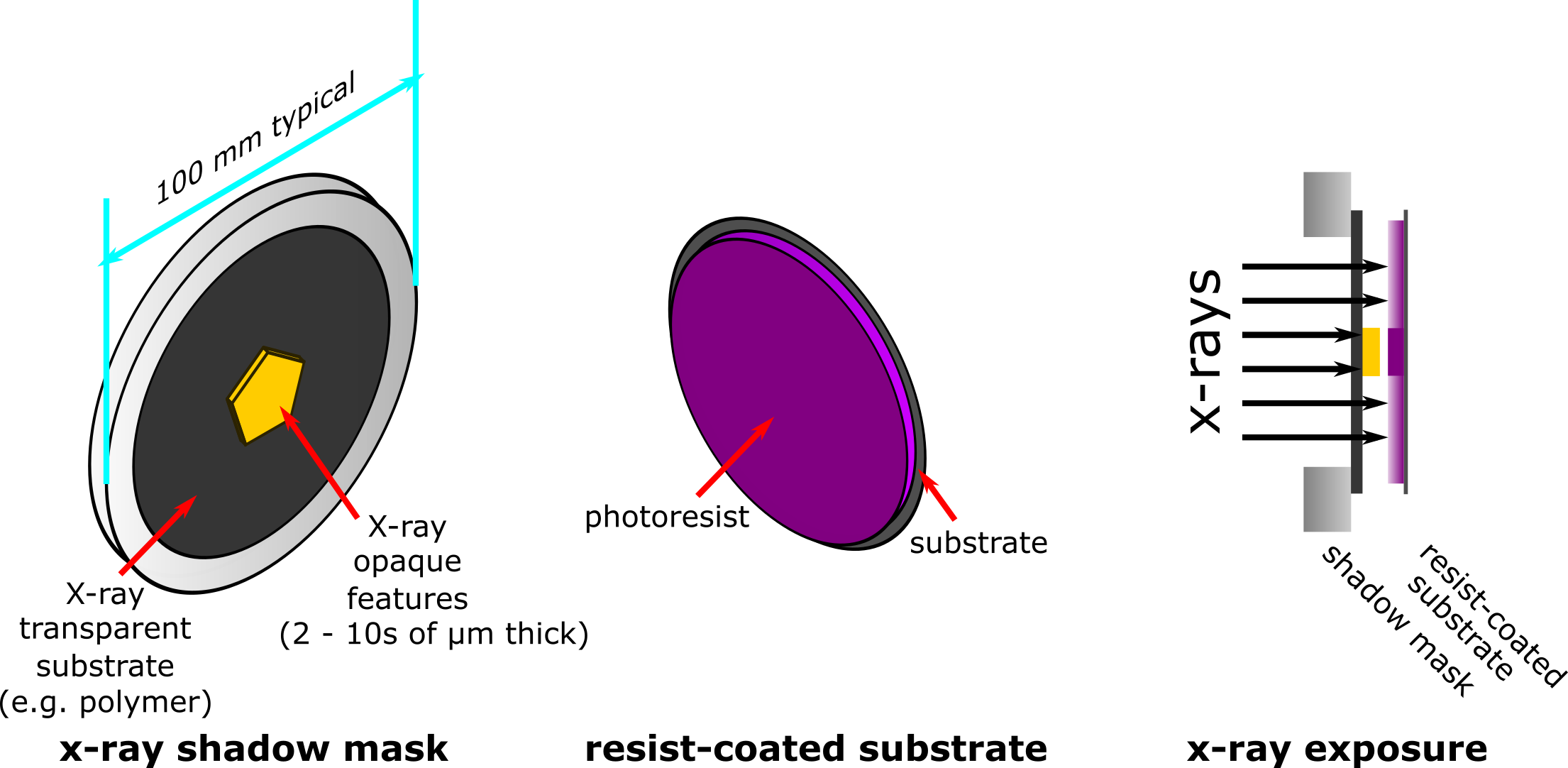
X-ray lithography
X-ray Lithography
X-ray lithography uses a collimated beam of x-rays from a synchrotron source to induce solubility changes in a photoresist coating. Subsequent development in solvent removes material based on the new solubility difference, revealing the desired features. The developed structures can undergo further post-processing, such as metal deposition, to create useful devices.

(Above) X-ray lithography mask mounted in scanner in SyLMAND beamline. Gold absorber structures (orange) are supported on x-ray transparent graphite (black).
XRL uses a shadow mask which is mounted in the beamline endstation and scanned through the beam to uniformly expose a photoresist-coated substrate. Masks are usually composed of an x-ray transparent substrate (e.g. graphite, cured SU8, Ti) supporting mask structures formed from x-ray opaque material (e.g Au). Mask fabrication is a time-consuming and difficult process. Particular attention must be paid to the thickness of the absorber layer and sidewall quality to ensure good mask contrast. Masks can be prepared in house using the direct write UV lithography system.

Common Resists
Positive Tone
- PMMA – up to 2.5 mm. Thermoplastic acrylic resin. Good stability in a range of aqueous pH. Thin layers are spin-coated while thicker layers must be bonded from sheets of PMMA.
Negative Tone
- SU-8 – 3 to 50 um. Epoxy resin with outstanding stability in almost every aqueous or organic medium. Biocompatible, optically transparent, and permanent. Also compatible with UV lithography.
- ADEX and SUEX – 10 um to 500 um, greater thickness on request. Formulation of SU-8 into solid sheet which is laminated onto substrate. Also compatible with UV lithography.
Critical Feature Size
Feature sizes depend on those of the shadow mask. Masks made in house are limited by the direct write UV system (See below). Masks can be purchased from nanofabrication centers which offer nanometer scale features. These must be made by electron beam lithography.
Aspect Ratio
The collimated nature of synchrotron x-rays are fundamental to the remarkable aspect ratios which XRL can achieve. At SyLMAND, using PMMA aspect ratios of 50:1 have been achieved.
Technical Details of the Beamline
Synchrotron x-ray radiation is generated with a bend magnet. The energy range of light reaching the substrate is tuneable from 1 – 2 keV to > 15 keV by means of filters and a grazing incidence double bounce mirror system. Using the double-bounce mirrors and an upstream chopper, the beam intensity and spectrum can be tuned independently. At the substrate, the beam is 150 mm x 8 mm.